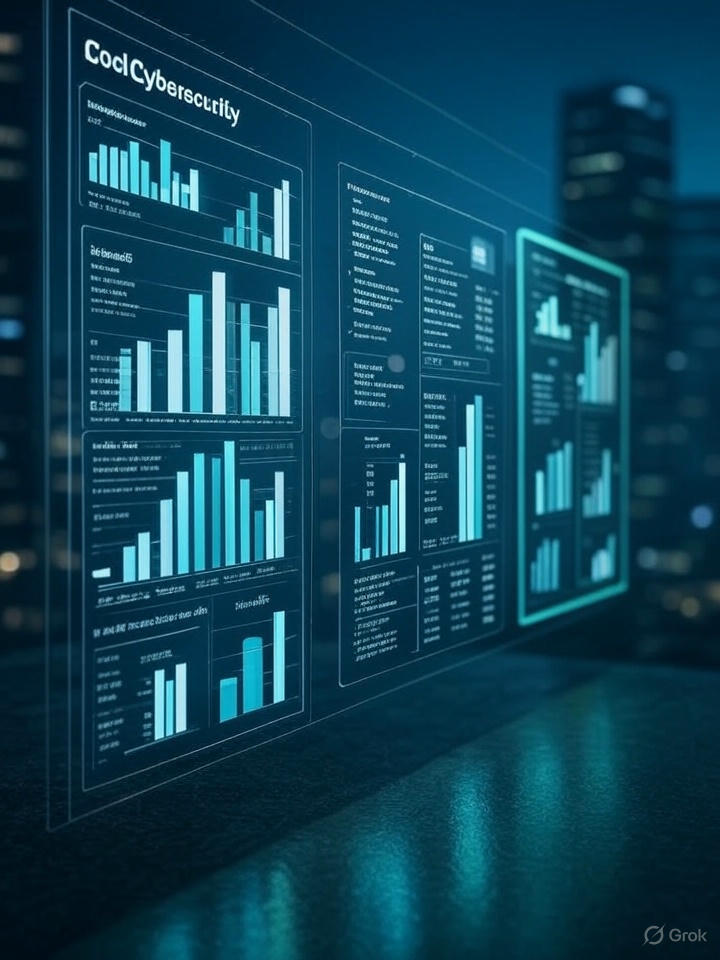In 2025, the digital landscape faces evolving threats at an unprecedented pace. Cybersecurity Statistics 2025: Why You Need Protection (Trends and Data) dives into the latest figures and reveals why robust defense is no longer optional. From ransomware surges to IoT vulnerabilities, these data-driven insights will help business owners, IT professionals, and students understand the critical need for security. This article combines authoritative research, real-world examples, and actionable advice to keep your organization safe.
Cybersecurity Statistics 2025: Why You Need Protection (Trends and Data) – Threat Landscape Overview
Global Breach Frequency
-
In 2024, over 3,932 publicly reported breaches exposed 26.4 billion records globally (Statista)【⁺statista】.
-
Ransomware attacks surged 40% year-over-year, averaging 1,300 incidents per week (Group-IB)【⁺groupib】.
-
Small businesses now face 43% of all cyberattacks, up from 28% in 2022 (Verizon DBIR)【⁺verizon】.
These numbers underscore the growing risk. Attackers target weak defenses, unpatched systems, and misconfigured cloud assets. As digital transformation accelerates, risk surfaces multiply.
History of Ethical Hacking: From Past to Present
Cost of Breach
The IBM Cost of a Data Breach Report 2024 found that the average cost per breach climbed to $4.45 million—the highest in 19 years【⁺ibm】. Key cost drivers include:
-
Detection and Escalation: 28% of total cost
-
Notification: 17%
-
Lost Business: 40%
These expenses include regulatory fines, customer churn, and brand damage. Investing in proactive security yields significant returns by reducing breach frequency and impact.

Cybersecurity Statistics 2025: Why You Need Protection (Trends and Data) – Attack Vectors & Vulnerabilities
Ransomware & Phishing Trends
Ransomware remains the top threat. In early 2025:
-
75% of ransomware groups now exfiltrate data for double extortion (Coveware)【⁺coveware】.
-
Phishing campaigns delivered payloads via social engineering in 91% of incidents (Proofpoint)【⁺proofpoint】.
Organizations must train employees and deploy email-filtering solutions. Regular phishing simulations can cut click-through rates by 60%.
Cloud & IoT Risks
Rapid cloud adoption has introduced new vulnerabilities:
-
Misconfigurations account for 32% of cloud breaches (Trend Micro)【⁺trendmicro】.
-
By 2025, Gartner predicts 25 billion connected devices will be online—up 20% from 2024, increasing the IoT attack surface【⁺gartner】.
Cybersecurity Statistics 2025: Why You Need Protection (Trends and Data) – Defensive Measures & Best Practices
1. Penetration Testing & Red-Team Exercises
Regular pentests help uncover hidden flaws. According to Ponemon:
-
Organizations perform pentests only 43% as often as recommended.
-
Companies with red-team programs recover 4× faster from attacks.
2. Zero Trust Architecture
Zero Trust adoption grew 54% in 2024, with organizations eliminating implicit trust zones (Forrester)【⁺forrester】. Zero Trust principles include:
-
Verify every device and user
-
Segment critical assets
-
Continuously monitor and log all activity
Implementing Zero Trust reduces lateral movement by 90% and limits breach impact.
3. Employee Awareness & Training
Human error still causes 82% of breaches (Human Factor Report)【⁺humfactor】. Effective steps include:
-
Quarterly phishing simulations
-
Role-based security workshops
-
Regular policy updates
Well-trained teams act as your first line of defense.
Cybersecurity Statistics 2025: Why You Need Protection (Trends and Data) – Regulatory & Compliance Drivers
Global Data Privacy Laws
-
GDPR fines in 2024 totaled €1.8 billion, up 26% year-over-year (DLA Piper)【⁺dlapiper】.
-
New regulations like CPRA (California) and PIPL (China) expand data subject rights.
Non-compliance risks include steep penalties and brand erosion. Robust security programs ensure you meet evolving legal requirements worldwide.
Industry Mandates
-
PCI DSS now requires annual pentests and continuous monitoring.
-
HIPAA mandates risk assessments for protected health information.
Organizations that embed security into business processes avoid fines and strengthen customer trust.
Conclusion
Cybersecurity Statistics 2025: Why You Need Protection (Trends and Data) makes one fact clear: threat actors move faster than ever. Global breach counts, rising costs, and shifting attack vectors demand a proactive stance. By combining penetration testing, zero trust, and employee training, you can close critical gaps. Regulatory pressures further highlight the need for robust security frameworks.
Data doesn’t lie—investing in defensive measures now saves millions later. Ready to fortify your organization? Contact our expert team at Hire a Hacker Expert to schedule a comprehensive assessment today.



No responses yet